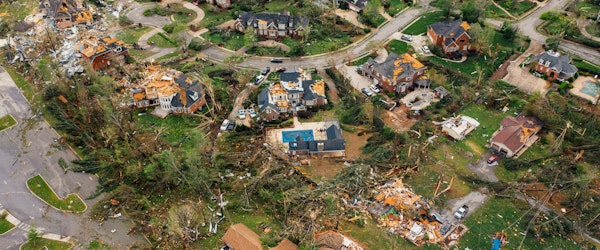
Record-Breaking Insured Losses in 2025 Highlight Growing Impact of U.S. Wildfires and Storms
Thursday, August 14th, 2025 Catastrophe Insurance Industry Property Risk ManagementGlobal insured catastrophe losses reached $84 billion in the first half of 2025, according to Gallagher Re’s latest report—a 55% jump over the decadal average and the highest first-half total since 2011. This surge in insured losses was overwhelmingly driven by catastrophic events in the United States, with January wildfires in California and an active severe convective storm (SCS) season accounting for 87% of total global losses. Alternative estimates from Swiss Re and Munich Re place insured losses slightly lower at around $80 billion, though still marking a historically high figure.
California’s winter wildfires in the Los Angeles region alone contributed $40 billion in insured losses—nearly doubling the prior record for global wildfire claims set in 2018. Unseasonably dry conditions, fueled by ongoing drought and strong Santa Ana winds, created ideal conditions for widespread fire damage during a period typically dominated by rainfall. Meanwhile, the U.S. experienced 13 billion-dollar weather events, largely driven by hail and tornadoes in states like Texas and the Southeast. The costliest SCS outbreak occurred in mid-March, generating nearly $33 billion in insured damages.
Outside of the U.S., natural catastrophe activity remained relatively low. Notable exceptions included a powerful magnitude 7.7 earthquake in Myanmar affecting parts of Thailand. Gallagher Re reported non-U.S. insured losses under $10 billion, a rare benchmark that has only been crossed once before since 2006. Climate data from NOAA and WMO signals a troubling rise in temperature anomalies and wildfire-prone conditions, with projections indicating 2025 is on track to be one of the warmest years on record.
Despite the rising costs, industry experts say the insurance sector remains in a strong position to handle these losses. However, voices like CLM fellow Patrick Milone caution that insufficient government response and underinsurance in high-risk zones may exacerbate damage and delay recovery. Analysts and claims professionals are calling for better risk mapping, more sophisticated data analysis, and coordinated action between insurers, insureds, and government agencies to improve preparedness and claims handling for climate-driven catastrophes.





